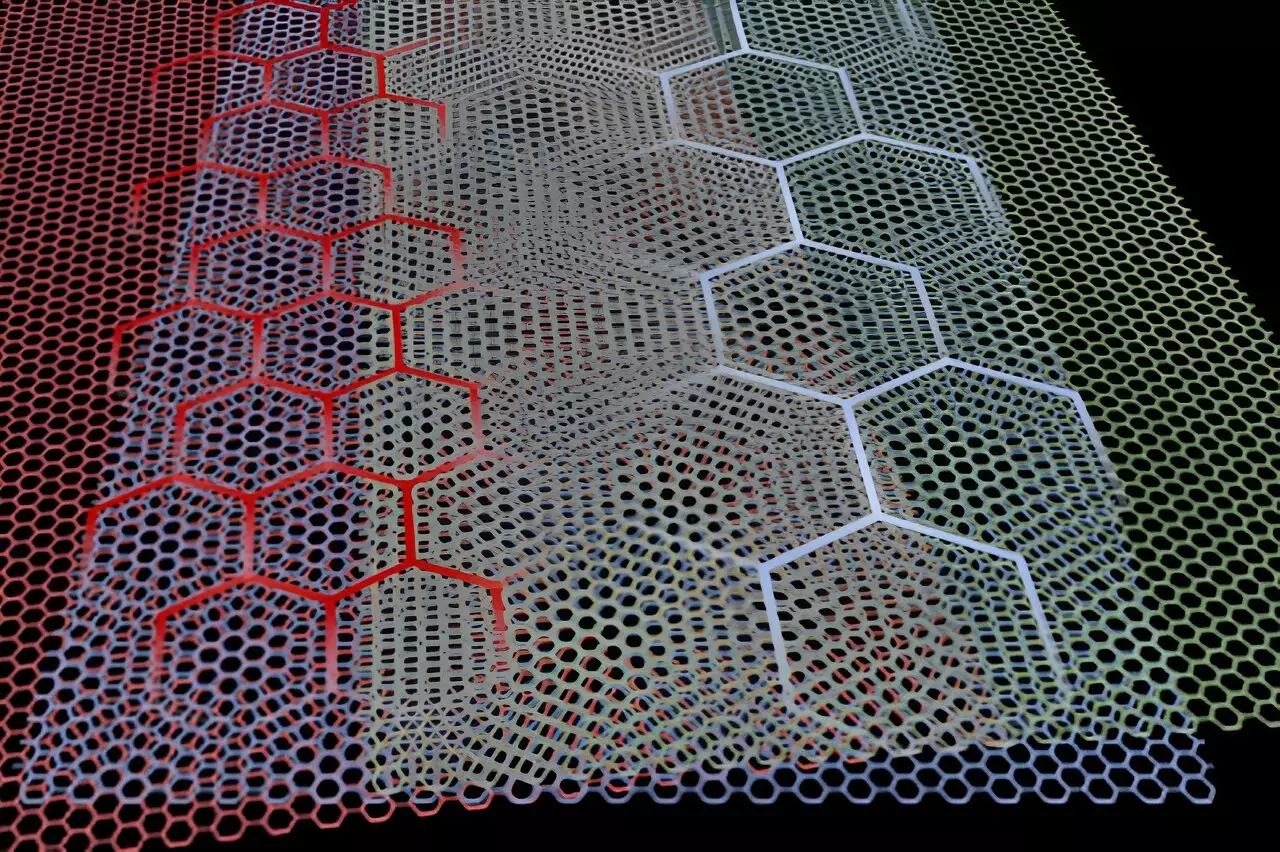Quasicrystals, a fascinating class of materials that fall between crystals and amorphous structures, have remained a mystery in the scientific community. However, researchers from MIT and their colleagues have made significant progress in this field by developing a novel method to create atomically thin versions of quasicrystals. The team combined this technique, known as twistronics, with their expertise in studying moiré superlattices to unlock new phenomena such as superconductivity. This breakthrough not only provides a platform for studying quasicrystals but also opens up opportunities to explore exotic physics and potential applications. The integration of twistronics and quasicrystals has led to unexpected connections, shedding light on the hidden properties of these unique materials.
Unveiling the Power of Twistronics
Twistronics involves stacking atomically thin layers of materials and rotating them at a slight angle to create a moiré superlattice. This pattern alters the electronic behavior of the material, giving rise to intriguing phenomena. By manipulating the number of electrons in the system, researchers can customize the moiré superlattice to exhibit various properties. Over the past five years, twistronics has gained momentum in the scientific community, with MIT researchers leveraging this technique to develop new quantum materials. For instance, the team successfully transformed magic-angle twisted bilayer graphene into three unique electronic devices. Another breakthrough involved introducing ferroelectricity into well-known semiconductors. Additionally, scientists predicted unusual magnetic phenomena and provided guidelines for their realization.
In their latest work, the MIT researchers focused on a moiré system consisting of three layers of graphene. Graphene is a single layer of carbon atoms arranged in a hexagonal lattice structure resembling a honeycomb. By twisting two of the graphene layers at slightly different angles, the team unexpectedly generated a quasicrystal, a peculiar material class first discovered in the 1980s. Quasicrystals possess unconventional patterns that differentiate them from crystals and amorphous materials, making them intriguing subjects of study. However, due to their challenging synthesis methods, quasicrystals have received less attention, particularly regarding their electronic properties. The researchers aimed to change this by developing a simpler platform to produce quasicrystals.
Since the original researchers lacked expertise in quasicrystals, they sought guidance from renowned Professor Ron Lifshitz of Tel Aviv University. Aviram Uri, one of the co-first authors of the paper, had studied under Lifshitz during his undergraduate studies and was familiar with his work on quasicrystals. Lifshitz played a crucial role in helping the team comprehend their creation, which they termed a moiré quasicrystal. The team pushed the boundaries by tuning the moiré quasicrystal to exhibit superconductivity, enabling the transmission of current with zero resistance at low temperatures. Superconductivity is a phenomenon that can significantly enhance the efficiency of electronic devices. The exploration of moiré quasicrystals offers a novel path to unravel the mysteries surrounding superconductivity.
While investigating the moiré quasicrystal system, the physicists discovered evidence of symmetry breaking, indicating strong electron-electron interactions. This observation excited the team as such interactions often give rise to exotic physics and intriguing phenomena. By engaging in discussions across continents and collaborating with experts, the researchers gradually unraveled the properties and behaviors of the moiré quasicrystal system. However, they acknowledge that there are still numerous mysteries left to be uncovered. Nonetheless, the journey of deciphering their creation and uncovering its unique properties has been an exhilarating experience for the team.
The fusion of twistronics and quasicrystals has opened up new opportunities to explore the rich and uncharted realm of exotic materials. Through their research, MIT scientists and their collaborators have demonstrated the creation of atomically thin quasicrystals, unveiling their potential for superconductivity and other intriguing phenomena. This breakthrough not only deepens our understanding of quasicrystals but also expands our knowledge of twistronics, forging unexpected connections with various fields of physics and chemistry. As the researchers continue to decode the intricacies of quasicrystals, they hope to unlock further mysteries and pave the way for future applications in advanced electronic devices and physics research.


Leave a Reply